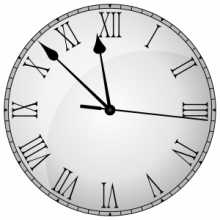Research has proven that missing this hour of sleep will change people’s mood, their productivity, increase their risk for accidents and even heighten their risk of having heart attacks. For these reasons, many people may be asking why we even change the time twice a year.
Daylight Saving began when Benjamin Franklin was President. The idea came about to give us an extra hour of daylight during the spring and summer months. There has been debate about this issue since it first started. Farmers even stated that this disrupted the egg cycles of the chickens.
During World War I, Daylight Saving Time helped with the countries of Germany and Austria save electrical power. They began setting their time back an hour on April 30, 1916 at 11:00, pm. Soon other countries followed their lead.
Today, many countries, like the U.S., have their set times to turn the clocks up and back twice a year. Yes, these actions do continue to spark debate. They also have scientific reasons for many of these debates.
Many doctors have found that the change in the time upset our sleep patterns, especially in children. They also found that the higher accident rate the next day is not a coincidence. These accidents are related from a lack of sleep. What do they suggest people do to help adjust to this change? They suggest we enjoy the morning light once we are awake, avoid the evening the light, and if we continue to have problems sleeping we should take a melatonin supplement to help reset our internal time clock.
